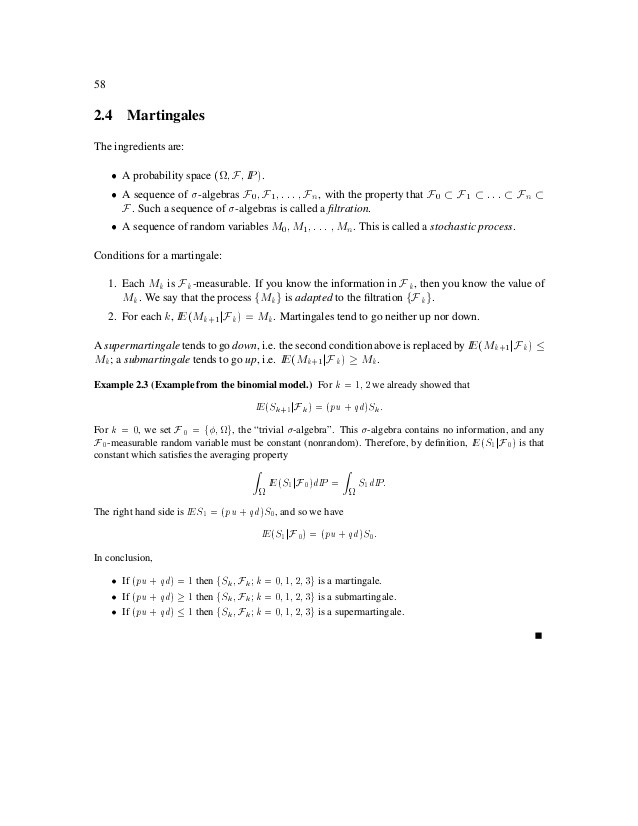ASSET PRICING MODELS (Finance)
Post on: 21 Сентябрь, 2015 No Comment

Abstract
The asset pricing models of financial economics describe the prices and expected rates of return of securities based on arbitrage or equilibrium theories. These models are reviewed from an empirical perspective, emphasizing the relationships among the various models.
Asset pricing models describe the prices or expected rates of return of financial assets, which are claims traded in financial markets. Examples of financial assets are common stocks, bonds, options, and futures contracts. The asset pricing models of financial economics are based on two central concepts. The first is the no arbitrage principle, which states that market forces tend to align the prices of financial assets so as to eliminate arbitrage opportunities. An arbitrage opportunity arises if assets can be combined in a portfolio with zero cost, no chance of a loss, and a positive probability of gain. Arbitrage opportunities tend to be eliminated in financial markets because prices adjust as investors attempt to trade to exploit the arbitrage opportunity. For example,
if there is an arbitrage opportunity because the price of security A is too low, then traders efforts to purchase security A will tend to drive up its price, which will tend to eliminate the arbitrage opportunity. The arbitrage pricing model (APT), (Ross, 1976) is a well-known asset pricing model based on arbitrage principles.
The second central concept in asset pricing is financial market equilibrium. Investors desired holdings of financial assets are derived from an optimization problem. A necessary condition for financial market equilibrium in a market with no frictions is that the first-order conditions of the investors optimization problem are satisfied. This requires that investors are indifferent at the margin to small changes in their asset holdings. Equilibrium asset pricing models follow from the first-order conditions for the investors portfolio choice problem, and a market-clearing condition. The market-clearing condition states that the aggregate of investors desired asset holdings must equal the aggregate market portfolio of securities in supply.
Differences among the various asset pricing models arise from differences in their assumptions about investors preferences, endowments, production and information sets, the process governing the arrival of news in the financial markets, and the types of frictions in the markets. Recently, models have been developed that emphasize the role of human imperfections in this process. For a review of this behavioral finance perspective, see Barberis and Shleifer (2003).
Virtually all asset pricing models are special cases of the fundamental equation:
where Pt is the price of the asset at time t and Dt+1 is the amount of any dividends, interest or other payments received at time t + 1. The market wide random variable mt+1 is the stochastic discount factor (SDF). By recursive substitution in Equation (8.1), the future price may be eliminated to express the current price as a function of the future cash flows and SDFs only: Pt = Et. Prices are obtained by discounting the payoffs, or multiplying by SDFs, so that the expected present value of the payoff is equal to the price.
We say that a SDF prices the assets if Equation (8.1) is satisfied. Any particular asset pricing model may be viewed simply as a specification for the stochastic discount factor. The random variable mt+1 is also known as the benchmark pricing variable, equivalent martingale measure, Radon-Nicodym derivative, or intertemporal marginal rate of substitution, depending on the context. The representation in Equation (8.1) goes at least back to Beja (1971), while the term stochastic discount factor is usually ascribed to Hansen and Richard (1987).
Assuming nonzero prices, Equation (8.1) is equivalent to:
Et (mt+1 Rt+1 1) = 0, (8.2)
where Rt+1 is the vector of primitive asset gross returns and 1 is an N-vector of ones. The gross return R,t+1 is defined as (Pi,t+1 + Df,t+1)/Pi,t, where Pi,t is the price of the asset i at time t and Di,t+1 is the payment received at time t + 1. Empirical tests of asset pricing models often work directly with asset returns in Equation (8.2) and the relevant definition of mt+1.
Without more structure the Equations (8.1,8.2) have no content, because it is always possible to find a random variable mt+1 for which the equations hold. There will be some mt+1 that works, in this sense, as long as there are no redundant asset returns. For example, take a sample of asset gross returns with a nonsingular covariance matrix and let mt+1 be .[1′(Et














